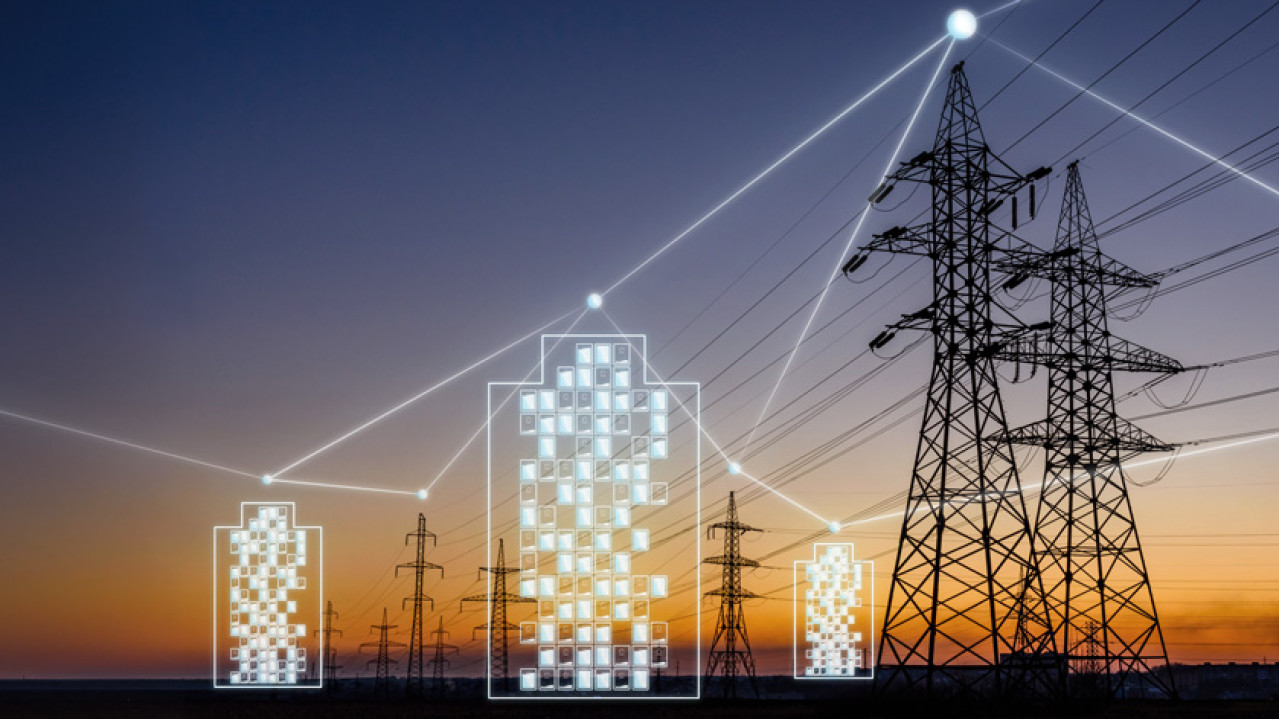
Flexibility as capital: Why the sonnenVPP pools battery capacities
To ensure a sustainable and stable power supply, the electricity grid of the future must find ways to deal with fluctuations in wind and solar energy. The key word here is flexibility. Luckily, the sonnenVPP has been contributing to this in Australia for just over three and enables participating households to benefit financially.
The energy transition is a challenging endeavour.
On one hand, we always want a sufficient and stable power supply. On the other hand, renewable power generation can be susceptible to fluctuations depending on the weather. One of the greatest achievements of our lifetime is that we can overcome this challenge with technology.
Flexibility is a key element of a functioning, sustainable energy future, and an essential part of a successful energy transition. But what exactly does the term flexibility mean in relation to our electricity grid?
Flexibility is defined as the change in feed-in and/or consumption at an individual or aggregated level. This is often in response to an external signal with the aim of providing a service in the energy system or keeping the grid operation stable.
In other words, it is about the electricity grid's ability to react to fluctuations and guarantee the supply of electricity everywhere, always. This is because consumption and generation must always be in balance in an electricity grid for it to be stable. If this balance is disturbed the worst-case scenario is a local, or even nationwide, blackout.
The balance corresponds to the grid frequency which in both Europe and Australia, for example, is 50 Hertz. If there is too much or too little electricity, the grid frequency fluctuates accordingly. In Australia, the National Energy Market Operator (AEMO) or market operators continuously intervene to ensure that the frequency does not deviate. There is very little room to manoeuvre here. There are some technical measures for this, such as grid services such as frequency control power serviced by the Frequency Control Ancillary Service (FCAS) in Australia or the Frequency Containment Reserve (FCR) in Germany.
Conventional power plants can increase or decrease their output to compensate for differences between supply and demand. These conventional flexibilities are gradually being reduced with the energy transition, as more controllable and predictable energy sources such as nuclear power and coal are being replaced by energy sources that can fluctuate such as wind and solar.
This is why flexibility is becoming increasingly important
The electricity grid as we know it is not designed for this. Due to the fluctuating feed-in, the increase in imports and exports and the sluggish expansion of the grid, it is reaching its load limit and is less able to balance energy supply and demand.
As a result, the grid is technically slowing down the energy transition by being preoccupied with avoiding power outages.ii New producers or even large-scale consumers such as EV chargers or heat pumps sometimes find it difficult to be connected to the grid. By making the players on the electricity market more flexible, the grid can react better to fluctuations in supply and demand. It can begin to draw on electricity reserves during consumption peaks.
Flexible units, i.e. systems that can quickly switch between receiving and supplying energy will become more important for the security of supply in the future.
The sonnenVPP: Grid-friendly flexibility through the power of the community
Home energy storage systems offer this necessary flexibility. Alone, their low capacity prevents them from participating in the energy market where this flexibility is traded. However, if they are digitally connected with other home storage systems to form a huge virtual battery, they can participate in the energy market as a virtual power plant (VPP).
This is also the case with the sonnenVPP. Here, sonnen acts as an aggregator that connects the sonnen batteries of our customers. Thanks to intelligent networking, the sonnenVPP can perform all the functions of a conventional power plant. It produces and stores electricity and balances out fluctuations in the electricity grid. The flexibility is traded on the balancing power and energy markets.
Virtual power plants generate electricity with solar systems and do not require the construction of large, local electricity storage facilities. So, they are also particularly sustainable and help to reduce the need for gas and coal-fired power plants with every new household.
Flexibility as capital: driving the energy transition and earning money
Participants in the sonnenVPP contribute to the energy security and ensure that we are closer to our vision of affordable and clean energy for all.
Because what this virtual power plant has been generating for five years now is not just electricity, but flexibility - a crucial and precious resource in the energy system. And what is important usually also has a value. That's why we at sonnen can also offer our customers a financial advantage by providing flexibility.
By bundling and trading the flexibility of the batteries, participants in the sonnenVPP receive additional income. This is a privilege that was previously reserved for conventional players on the energy market, such as traditional power plants. The remuneration is paid via a profit share, which is paid out to the individual participating households in different ways depending on the country.
Even more value tomorrow: the price of flexibility continues to rise
The financial advantage of providing flexibility may become even greater in the future. This is particularly true in markets where customers also benefit from direct marketing. Here, the electricity fed into the grid is sold at the respective market price. In the future, prices on the electricity market are expected to fluctuate even more dramatically, as the feed-in of wind and solar energy increases.
According to a forecast by the the International Energy Agency (IEA), the share of renewable energies in global electricity generation will increase from 30% today to almost 50% by 2030.iii At the same time, the pace of regulation in some countries is increasing the barriers to market entry. This means that anyone participating in balancing the energy market and marketing their flexibility has to fulfil certain requirements. As a result, this reduces the number of providers and increases the value of the "commodity". This is a positive development for sonnenVPP, which already received prequalification in 2018.
At the same time, the transport and heating transition worldwide creates additional flexibility in households, that can be traded on the energy market. Of particular interest here are large controllable quantities, such as electric cars and heat pumps. This is as their electricity consumption can be shifted to create financial benefits without any loss of comfort. As part of an early user test, we enabled e-cars to participate in the sonnenVPP at the beginning of the year. This makes e-cars an active and stabilising part of the energy system - and another marketable flexibility.
With the flexibility of the sonnenVPP, sonnen is one of the accelerators of the energy transition. The number of households joining our network is growing every day. With the power of this unique electricity community, we will continue to drive the energy transition and benefit together from our successes.
Hip hip hooray for 5 years of sonnenVPP!
For half a decade, the sonnenVPP has been providing more stability to electricity grids and more financial rewards for customers.






